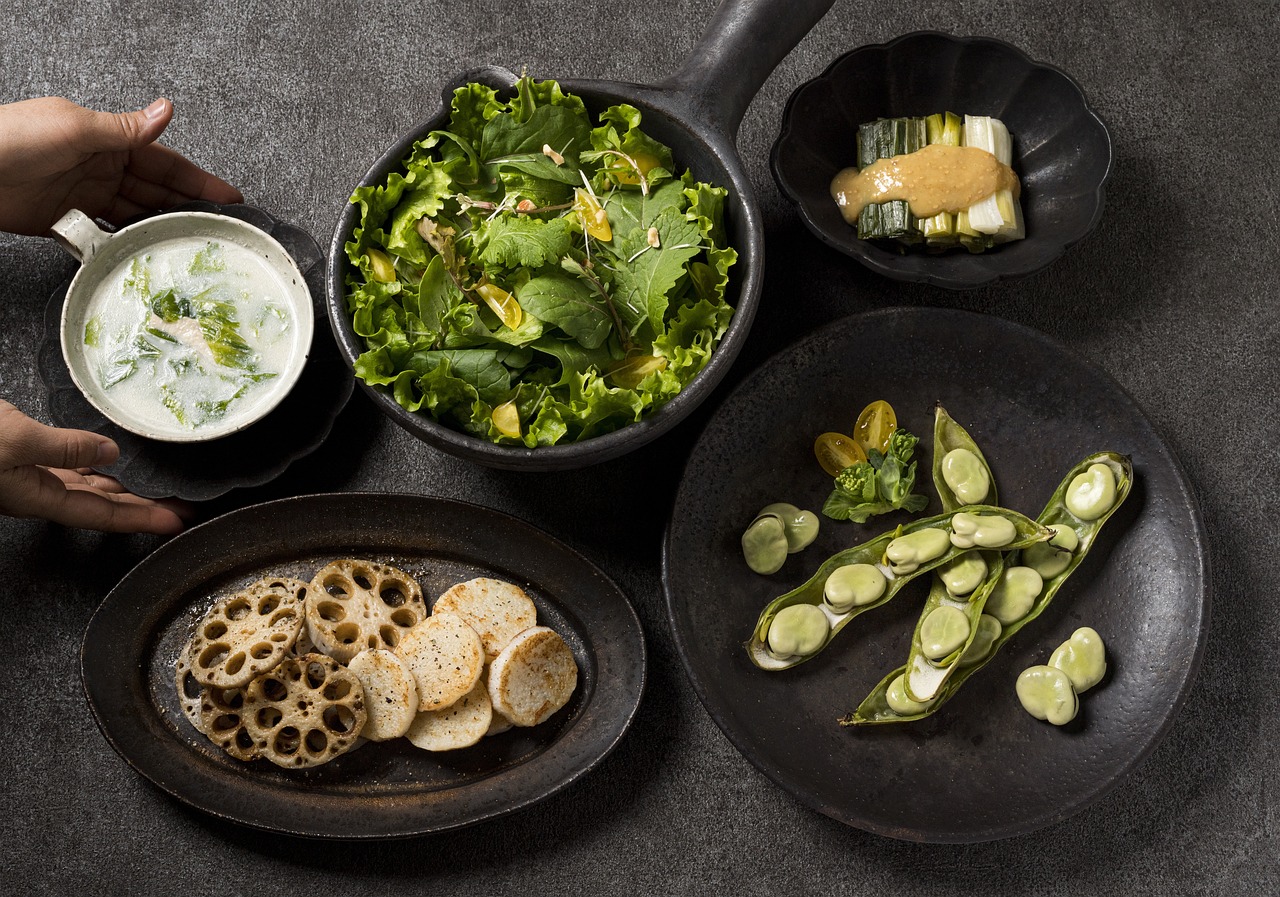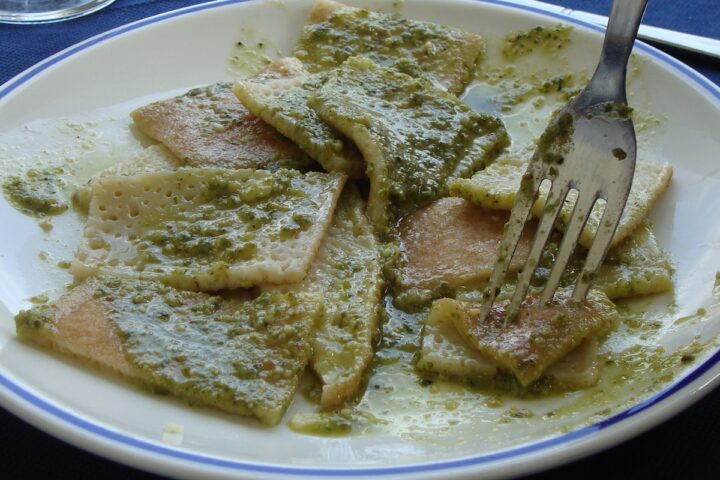Source: Image by a pixabay_lotus-root-culinary-history-uses-benefits
The lotus plant has always had immense symbolic value for many cultures and thus represents purity and light. However, much attention goes to the ethereal flower, while the lotus root is submerged—invisibly—and with that, the quiet playing out of its importance in culinary history worldwide. This paper details the history of lotus root, from its origin and cultural value to its application in cuisine.
The Lotus Root: A Botanical Marvel
The lotus root is the rhizome of the lotus plant, growing underwater in muddy conditions. From this most unlikely habitat arises crunchy, white, and fibrous stalks with tiny air holes throughout, accounting for the unique texture. This adaptation to aquatic habitats renders it very hardy and adaptable.
Lotus Root in Ancient Civilizations
The history of consuming lotus root extends over thousands of years to its utilization in ancient Asian and other civilizations. It is known that the Egyptians considered the lotus flower as being sacred to Ra, their sun god. Although little is written about the use by Egyptians of lotus roots, such respect for the plant could indicate that at one time it was a staple in their diet. The lotus has been related to the Indian subcontinent since ages. There are several texts and scriptures related to ancient times that mention the lotus flower, so its root was probably consumed too. Lotus seeds have been a part of the diet for thousands of years in India, with probable consumption of the root dating back to the same years. China has a long history of growing lotus plants, as long as thousands of years ago. Lotus roots have been used for a very long time as a staple food in Chinese cuisine, so their various preparations and uses evolved over time.
Cultural Significance of Lotus Root
Beyond its culinary value, the lotus root carries profound cultural and symbolic meaning. The lotus is associated with purity, beauty, and spiritual enlightenment across many Asian cultures. Being itself the rhizome that grows in muddy waters yet gives birth to pristine flowers, the lotus has become symbolic of the rise above adversity onto spiritual growth. Traditional medicine systems like Ayurveda and Traditional Chinese Medicine have conferred a number of medicinal properties upon the lotus root. It is believed to possess cooling, astringent, and digestive benefits.
Lotus Root in Contemporary Cooking
Lotus root is one of the most valued ingredients in contemporary cuisine, specifically in East Asian traditions. It is used in a variety of ways to create diverse dishes. Chinese cuisine incorporates lotus root in many different forms, including stir-fries, braises, soups, and stews. Some popular dishes include lotus root soup, lotus root stir-fry with pork, and lotus root salad. In Japan, lotus root is tempura battered and deep-fried or simmered in sweet soy sauce; it is even pickled. A common use for it is in oden, a type of hot pot where various ingredients such as daikon radish, fish cakes, and boiled eggs are cooked in a savory dashi broth. Korean cuisine incorporates lotus root in kimchi, jeongol, and as a side dish. Vietnamese cuisine uses it in salads, soups, and stir-fries. A light and refreshing flavor profile is what it gets usually paired with.
Nutritional Benefits of Lotus Root
Not only is lotus root delicious, but there are also many nutritional benefits associated with it. It is low in calories and rich in dietary fiber, vitamin C, potassium, and iron. A great amount of fiber present helps digestion, while antioxidants contribute to the general good health of the organism.
How to Select and Prepare Lotus Root
The choice of lotus root is very important for the perfect flavor and texture. Choose roots that are firm and heavy and clean, fresh in appearance with no brown spots or soft areas. Lotus root can be sliced, diced, or julienned according to recipe requirements. In order to avoid discoloration, slice the lotus root and soak in water with a dash of vinegar or lemon juice.
Lotus Root Recipes
Here are some well-loved lotus root recipes to fire up your creativity: Crispy Lotus Root Chips: Thinly slice the lotus root, then bake or air-fry until crispy for a snack that’s addictive. Lotus Root Salad: Julienne the lotus root and mix it with fresh vegetables and herbs of your choice, dressed with a tangy dressing for a refreshing and healthy salad. Lotus Root Soup: Pair the lotus root with chicken or pork broth and other vegetables like soy sauce, ginger, and scallions for a comforting and nourishing soup.
Position of the Lotus Root in Southeast Asia
While the lotus plant has always been considered sacrosanct throughout Asia, the lotus root forms a very special and diversified relationship with Southeast Asia. This watery land offered excellent growth conditions for the lotus.
Every one of these countries, whether Thailand, Vietnam, or Cambodia, has used lotus root differently in their cuisines. In Thai cuisine, lotus roots are used in curries, stir-fries, and salads. Its crisp texture fuses well with the fragrant flavors of Thai herbs and spices. Vietnamese cuisine pairs lotus root in refreshing summer rolls with fresh herbs and rice noodles. The Cambodians have a long history of using lotus root in their Khmer cuisine, often cooking it in coconut milk or fermenting it with fish for a specific taste.
The Lotus Root in Western Cuisine
Although being a part of Asian cuisine for thousands of years, the food use of lotus root in Western cuisine dates only a few decades back. With the current intermingling of various food cultures across the world, it is now edging toward recognition and popularity. Chefs and food enthusiasts are discovering new flavor combinations and culinary techniques to use this aquatic vegetable. For Western dishes, lotus root is making its way into salads, soups, and roasted vegetable platters. Having a unique texture and mild flavor itself, it works well as a potato or other root vegetable substitute in many recipes.
Lotus Root Growing and Sustainability
Basically, cultivation of the lotus has a huge impact on the local ecosystem and is part of sustainable traditional agriculture in most Asian countries. Lotus is one of those plants which supplied food, medicine, and other materials while purifying the water at the same time and maintaining biodiversity.
With the rising demands, unsustainable practices have sprung out. Over-harvesting, spilling chemical fertilizers and pesticides, and habitat destruction characterize the threats to lotus ecosystems. There is, hence an indispensable move towards sustainable lotus cultivation in a bid to preserve this valuable resource for posterity.
Lotus Root in Traditional Medicine
The lotus root has been in use for culinary, cultural, and traditional medicine purposes for hundreds of years. It is believed that, in traditional Chinese medicine, lotus root possesses cooling, astringent, and digestive properties. Thus, it is often prescribed for diarrhea, excessive thirst, and hemorrhage. Research today has also discovered the potential health benefits of lotus root. The studies pointed out the presence of antioxidants in it that might help fight against the development of oxidative stress and its related chronic diseases. Other than that, the fiber present in lotus root contributes towards digestive health and weight management.
The Future of Lotus Root
With growing interest in the global market toward healthy and sustainable foods, the lotus root may soon assume center stage. Chefs and food scientists are constantly seeking new ways of harnessing this versatile vegetable, from fashioning innovative dishes to creating value-added products.
There is an increasingly recognized value in the preservation of traditional knowledge and practices of lotus cultivation. In supporting sustainable production and cultural heritage related to the lotus, we can ensure that this remarkable plant remains available for enjoyment by generations to come.
Conclusion
For thousands of years, the lotus root has attracted cultures and palates alike as a mysterious, beautiful symbol of purity and unsubdued vitality. From the classic water gardens to its arrival in contemporary kitchens, it shows nothing but timeless appeal. In appreciation for such an extraordinary plant, we grow sensitive to its cultural and ecological significance. The appreciation for lotus root as a culinary and cultural treasure establishes a sustainable and flavorful future.
Sources:
https://www.cuisineathome.com/tips/what-is-lotus-root/













